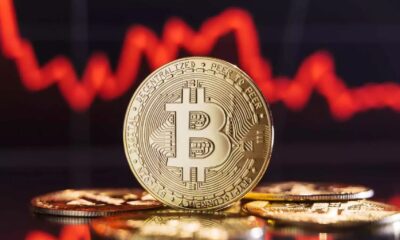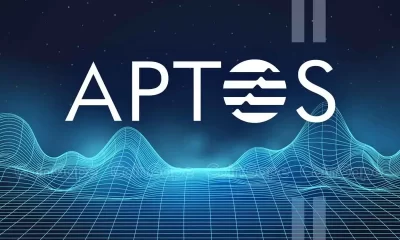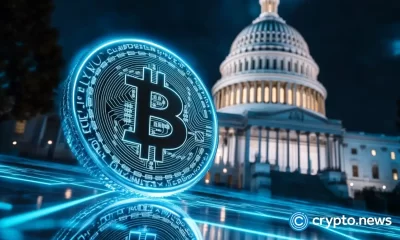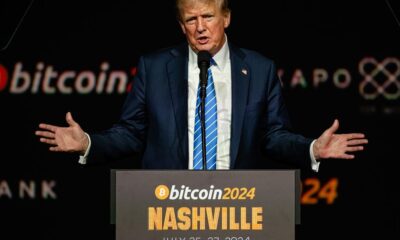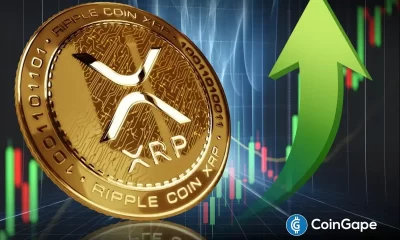Uncategorized
How to use Render Network for decentralized GPU rendering
Published
1 week agoon
By
admin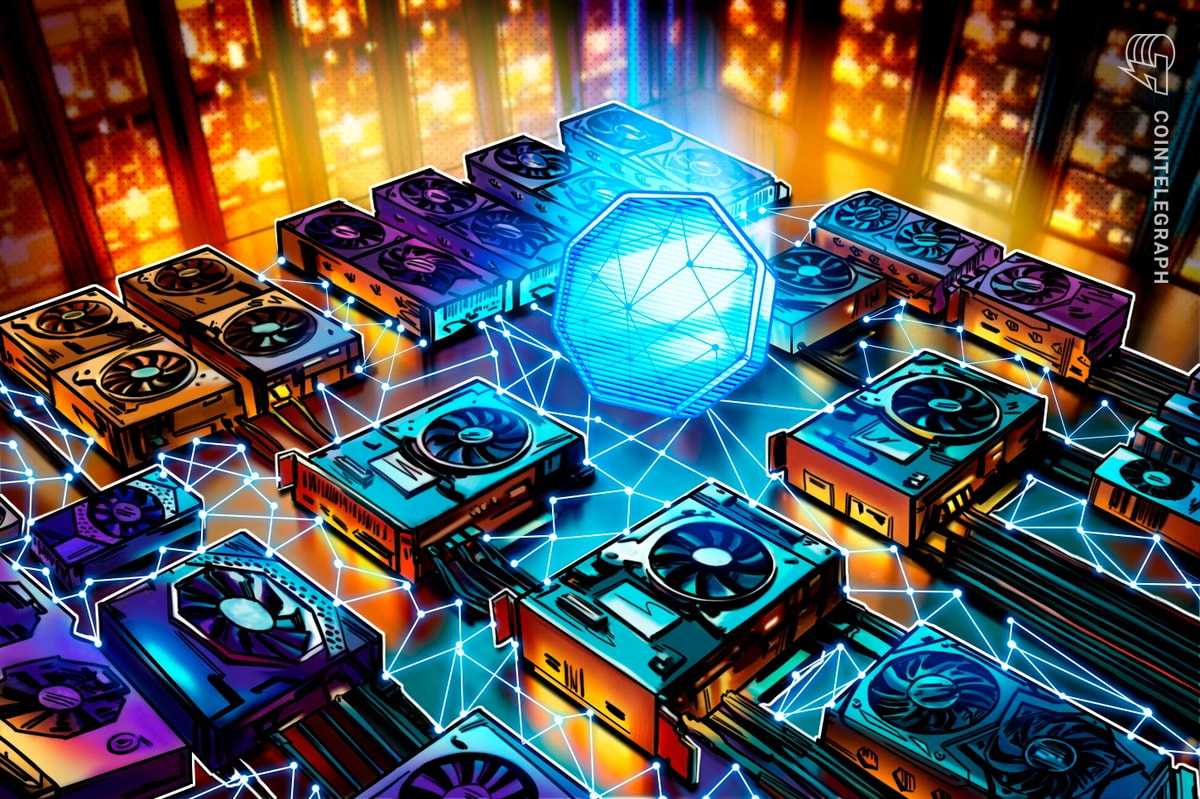
Key takeaways
Render Network connects GPU owners with creators, allowing users to rent idle graphics power for AI training, 3D rendering and crypto-related projects.
The RNDR token powers the ecosystem, enabling fast, transparent and decentralized transactions between creators and node operators.
Decentralized rendering is more accessible and cost-effective than traditional centralized GPU services, solving issues such as pricing, scalability and vendor lock-in.
Proof-of-render ensures verified outputs, rewarding only completed, validated tasks while maintaining blockchain-level trust and transparency.
The hunger for powerful graphics processing units (GPUs) has skyrocketed. Whether it’s training complex AI models or rendering high-fidelity 3D graphics, the demand often outstrips supply.
Traditional centralized GPU services, while effective, can be costly and sometimes inaccessible to smaller developers or artists. This is where the Render Network steps in, offering a decentralized approach to GPU rendering.
By connecting individuals who have idle GPU power with those who need it, Render Network creates a collaborative ecosystem that benefits both parties. This not only democratizes access to high-performance computing but also introduces a crypto-economic model, utilizing its native RNDR token to facilitate transactions.
In the sections that follow, you’ll learn how Render Network is contributing to the evolution of AI development and 3D rendering through decentralization and blockchain technology.
What is Render Network?
At its core, Render Network is like an Airbnb for GPU power. If you’ve got a powerful graphics card sitting idle, you can rent it out. And if you’re someone building an AI model or rendering a complex 3D scene but don’t have enough GPU muscle, you can tap into that unused power — on demand.
Here’s how it works:
Creators
These are the people who need serious computing power — think AI researchers training models, 3D artists rendering animations or developers working on visually demanding projects. Instead of buying expensive hardware or paying top dollar for centralized cloud services, they can just hop on Render Network and get access to what they need when they need it.
Node operators
On the flip side, there are folks who have GPUs collecting dust (or at least not being fully used). Maybe it’s a gaming rig that’s idle during work hours or a small mining setup looking for a better use case. These operators can plug into Render Network, offer up their GPU power, and earn crypto — specifically RNDR tokens — for their trouble.
RNDR token
The RNDR token (RNDR) is the fuel that keeps this whole ecosystem running. It’s the currency used to pay for jobs on the network. Creators pay in RNDR; operators earn in RNDR. Everything happens transparently onchain, and the token system helps keep things fair and efficient.
In short: Creators get access to affordable, decentralized computing power; node operators get rewarded for sharing their resources; and RNDR tokens make it all tick. It’s a win-win setup that’s especially useful in AI and crypto-heavy workflows.
Did you know? Render Network employs blockchain technology to ensure that every transaction and rendering task is securely recorded, promoting transparency and trust among users.
The role of decentralization in GPU rendering
If you’ve ever tried renting GPU power from a big cloud provider, you know it can get expensive fast. And even then, you’re often competing with major corporations for access to the best hardware. The whole system works, sure, but it’s not exactly built with flexibility or accessibility in mind.
That’s where decentralization comes in. Render Network flips the script by spreading the workload across a global network of independent GPU owners. Instead of relying on a single provider, you’re tapping into thousands of available machines — from gaming rigs to pro-grade render farms — that might otherwise sit idle.
What’s the problem with centralized GPU rendering?
Centralized services come with a few key headaches:
It’s pricey: Renting powerful GPUs from the likes of Amazon Web Services or Google Cloud can eat through your budget quickly, especially if you’re running long jobs like training an AI model.
Scalability is limited: If you suddenly need more power, scaling up isn’t always smooth or instant. You’re stuck waiting in line — or paying more for priority access.
Access isn’t equal: Big corporations tend to hoard the best GPU availability, which makes it harder for smaller teams or indie creators to get what they need when they need it.
Vendor lock-in is real: Once you build your pipeline around one provider, switching later can be a pain (and expensive).
Why decentralization makes more sense
Now, here’s what a decentralized network like Render offers instead:
Lower costs: Because you’re tapping into existing resources that would otherwise be unused, pricing tends to be way more affordable.
Flexible scaling: Need more power? The network can grow with you — just pull in more nodes.
Equal access: There’s no gatekeeping. Anyone can request GPU resources, and anyone can provide them. It’s a much more level playing field.
Earn while you sleep: If you’ve got a powerful GPU, you can make it work for you by sharing it on the network when you’re not using it.
All in all, decentralized GPU rendering is quickly becoming the practical choice for AI builders, 3D artists and crypto-native developers who want more control over their tools and budget.
The crypto economy within Render Network
As you briefly explored, at the heart of Render Network’s decentralized rendering platform is its native cryptocurrency, the RNDR token. Let’s dive deeper.
RNDR token mechanics
The RNDR token serves as the primary medium of exchange within the Render Network. Creators use RNDR tokens to pay for rendering services, while node operators earn these tokens by providing their GPU power to process rendering tasks. This system creates a self-sustaining economy where computational resources are efficiently allocated and fairly compensated.
Additionally, a small percentage of RNDR tokens, ranging from 0.5% to 5%, is charged on every transaction to support the ongoing development and maintenance of the network.
Earning RNDR tokens
Once onboarded, node operators can connect their GPUs to the network and start accepting rendering jobs. After successfully completing and submitting a rendering task, the work undergoes verification to ensure quality standards are met. Upon approval, the corresponding RNDR tokens are transferred to the node operator’s digital wallet as compensation for their contribution.
Spending RNDR tokens
Creators looking to access rendering services can acquire RNDR tokens through various cryptocurrency exchanges. Once they have the tokens, they can submit their rendering projects to the network. The system calculates the required RNDR tokens based on the project’s complexity and resource demands. After the rendering is completed and the output meets the creator’s expectations, the RNDR tokens are released from escrow and transferred to the node operators who processed the job.
This token-based economy not only streamlines the transaction process within the Render Network but also fosters a collaborative environment where both creators and node operators benefit from the decentralized exchange of rendering services.
Did you know? Render Network utilizes a unique proof-of-render mechanism, which validates completed rendering tasks before compensating node operators. This system mirrors blockchain’s transaction validation processes, ensuring that only verified work is rewarded.
Getting started with Render Network
Here’s how to get started with Render Network.
For creators
Setting up an account and submitting rendering tasks require the following:
Obtain an OctaneRender license: Ensure you have an active OctaneRender license or subscription, which can be purchased from OTOY.
Access the Creator Portal: With your OctaneRender credentials, log in to the Creator Portal.
Prepare your project: Export your project as an ORBX file using OctaneRender. This format encapsulates all necessary assets and settings for rendering.
Submit your job: Upload the ORBX file to the Creator Portal, configure your rendering parameters (such as resolution and sample size), and choose a service tier that fits your needs.
Monitor and retrieve results: Once submitted, you can monitor the progress of your rendering tasks through the portal. Upon completion, download your rendered assets directly from the platform.
For node operators
Registering GPUs on the network requires:
Express interest: Complete the Render Network Interest Form to join the onboarding queue.
Await onboarding instructions: Once a slot becomes available, the Render Network team will provide further instructions for setting up your node.
By following these steps and best practices, both creators and node operators can effectively engage with the Render Network, leveraging its decentralized infrastructure for efficient rendering solutions.
A bright future for Render Network?
Render Network is quickly becoming a go-to solution for anyone needing serious GPU power — especially in AI and crypto. Decentralizing access to high-performance computing makes rendering and model training faster, cheaper and way more accessible.
What’s exciting is where it’s headed. The network is expanding to support more advanced AI workflows and exploring deeper integration with other blockchain ecosystems. That means more tools, more flexibility and even broader use cases — whether you’re building with AI, working in 3D or developing onchain applications.
At the end of the day, Render Network is creating a new kind of infrastructure where creators and GPU owners can work together, earn and scale. Whether you’re here to build or contribute, it could be a space worth jumping into.
Source link
You may like


Pump.Fun Co-Founder Says No Plan to Launch Token, Speaks Out Against Base-Promoted Meme Coin


Here’s What to Expect From TOWNS Token Price at Launch?


Ethereum fees drop to a 5-year low as transaction volumes lull


Bitcoin Price Holds Steady, But Futures Sentiment Signals Caution


Panama City Approves Bitcoin And Crypto Payments For Taxes, Fees, And Permits


Crypto Trader Says Solana Competitor Starting To Show Bullish Momentum, Updates Outlook on Bitcoin and Ethereum
Uncategorized
Ethereum fees drop to a 5-year low as transaction volumes lull
Published
2 hours agoon
April 17, 2025By
admin
Transaction costs on the Ethereum network have dropped to the lowest level in five years as the amount of activity on the blockchain is in a lull, according to the onchain analytics platform Santiment.
Ethereum network fees are now around $0.168 per transaction and the reduction in fees coincides with fewer people sending Ether (ETH) and interacting with smart contracts, Santiment marketing director Brian Quinlivan said in an April 17 blog post.
“When many people are using Ethereum, users bid higher fees to get their transactions confirmed faster This drives the average costs up,” Quinlivan said.
“When fewer people are transacting, like we see now, users don’t need to bid much. As a result, the average fee drops,” he explained. “It’s essentially a supply and demand system.”
Quinlivan said that, from a trading perspective, low fees can preclude a price rebound, Still, he added that traders appear to be patiently waiting for the global economic uncertainty to pass before scaling up their usual frequency of Ether and altcoin transactions.
Traditional and crypto markets tanked after US President Trump’s sweeping tariffs were announced on April 2. Many assets haven’t recovered to the same level as before their unveiling, despite tariff exemptions and a 90-day pause for most countries.
ETH has fallen over 12.5% in the past 14 days and has traded flat over the past 24 hours, hovering just under $1,600, according to CoinGecko.
“We can visibly see the increased sensitivity toward Ethereum discussions and tariff/economy news as prices have really threatened long-time support levels,” Quinlivan said.
“The more the retail community leans away from an asset, especially one with still thriving development, the higher the likelihood of an eventual surprise rebound with little resistance,” he added. After delays due to configuration issues and an unknown attacker causing headaches during the Holesky and Sepolia testnet activations, the Pectra upgrade for the Ethereum network is now scheduled to go live on the mainnet on May 7. Phase one is expected to double the layer-2 blob capacity from three to six, reduce transaction fees and network congestion and allow fees to be paid in stablecoins like USDC (USDC) and DAI (DAI). Related: Ethereum devs prepare final Pectra test before mainnet launch The maximum staking limit will also be increased from 32 ETH to 2,048 ETH. The second phase of Pectra is expected in late 2025 or early 2026 and will introduce a new data structure to enhance data storage efficiency and a system that improves scalability by enabling nodes to verify transaction data without storing the entire data set. The Pectra fork follows the network’s Dencun upgrade in March 2024, which slashed transaction fees for layer-2 networks and improved the economics of Ethereum rollups. Magazine: What are native rollups? Full guide to Ethereum’s latest innovation Published on By Solana’s native token SOL (SOL) failed to maintain its bullish momentum after reaching the $134 level on April 14, but an assortment of data points suggest that the altcoin’s rally is not over. SOL price is currently 57% down from its all-time high, partially due to a sharp decline in its DApps activity, but some analysts cite the growth in deposits on the Solana network as a catalyst for sustained price upside in the short term. Solana has established itself as the second-largest blockchain by total value locked (TVL), with $6.9 billion. After gaining 12% over the seven days ending April 16, Solana has pulled ahead of competitors such as Tron, Base, and Berachain. Positive signs include a 30% increase in deposits on Sanctum, a liquid staking application, and 20% growth on Jito and Jupiter. One could argue that Solana’s TVL roughly matches the Ethereum layer-2 ecosystem in deposits. However, this comparison overlooks Solana’s strong position in decentralized exchange (DEX) volumes. For example, in the seven days ending April 16, trading activity on Solana DApps totaled $15.8 billion, exceeding the combined volume of Ethereum scaling solutions by more than 50% during the same period. Solana reclaimed the top spot in DEX activity, surpassing Ethereum after a 16% gain over seven days. This was supported by a 44% increase in volume on Pump-fun and a 28% rise on Raydium. In contrast, volumes declined on the three largest Ethereum DApps—Uniswap, Fluid, and Curve Finance. A similar trend occurred on BNB Chain, where PancakeSwap, Four-Meme, and DODO saw reduced volumes compared to the previous week. It would be unfair to measure Solana’s growth only by DEX performance, as other DApps handle much smaller volumes. For example, Ondo Finance tokenized a total of $250 million worth of assets on the Solana network. Meanwhile, Exponent, a yield farm protocol, doubled its TVL over the past 30 days. Similarly, the yield aggregator platform Synatra experienced a 43% jump in TVL during the past week. Analysts are confident that a Solana spot exchange-traded fund (ETF) will be approved in the United States in 2025. However, expectations for significant inflows are limited due to a general lack of interest from institutional investors and the recent poor performance of similar Ethereum ETF instruments. If the spot ETF is approved, it could strengthen Solana’s presence—especially if the US government’s Digital Asset Stockpile plans come to fruition. Related: Real estate fintech Janover doubles Solana holdings with $10.5M buy Investors are eagerly awaiting the full audit of US federal agencies’ crypto holdings, initially expected by April 7. However, after missing this deadline, some journalists suggest that the executive order signed on March 7 did not require the findings to be made public. Regardless of whether SOL appears on that list, there are currently no plans from the government to acquire cryptocurrencies other than Bitcoin (BTC). Currently, there are few catalysts to justify a rally to $180, a level last seen 45 days ago on March 2. Without external factors causing a large influx of new participants into the crypto ecosystem, the increase in TVL and DEX market share alone is unlikely to push SOL’s price to outperform the broader market. This article is for general information purposes and is not intended to be and should not be taken as legal or investment advice. The views, thoughts, and opinions expressed here are the author’s alone and do not necessarily reflect or represent the views and opinions of Cointelegraph. Published on By Local governments in China are reportedly seeking ways to offload seized crypto while facing challenges due to the country’s ban on crypto trading and exchanges. The lack of rules around how authorities should handle seized crypto has spawned “inconsistent and opaque approaches” that some fear could foster corruption, lawyers told Reuters for an April 16 report. Chinese local governments are using private companies to sell seized cryptocurrencies in offshore markets in exchange for cash to replenish public coffers, Reuters reported, citing transaction and court documents. The local governments reportedly held approximately 15,000 Bitcoin (BTC) worth $1.4 billion at the end of 2023, and the sales have been a significant source of income. China holds an estimated 194,000 BTC worth approximately $16 billion and is the second largest nation Bitcoin holder behind the US, according to Bitbo. Zhongnan University of Economics and Law professor Chen Shi told Reuters that these sales are a “makeshift solution that, strictly speaking, is not fully in line with China’s current ban on crypto trading.” Countries and governments that hold BTC. Source: Bitbo The issue has been exacerbated by a rise in crypto-related crime in China, ranging from online fraud to money laundering to illegal gambling. Additionally, the state sued more than 3,000 people involved in crypto-related money laundering in 2024. Shenzhen-based lawyer Guo Zhihao opined that the central bank is better positioned to deal with seized digital assets and should either sell them overseas or build a crypto reserve. Ru Haiyang, co-CEO at Hong Kong crypto exchange HashKey, echoed the suggestion saying that China may want to keep forfeited Bitcoin as a strategic reserve as US President Donald Trump is doing. Related: Bitcoin rebounds as traders spot China ‘weaker yuan’ chart, but US trade war caps $80K BTC rally Creating a crypto sovereign fund in Hong Kong, where crypto trading is legal, has also been proposed. This issue has gained attention amid rising US-China trade tensions and Trump’s plans to regulate stablecoins and foster growth and innovation in the crypto industry. Several industry observers have suggested that China’s tariff response could result in a devaluation of the local currency, which may result in a flight to crypto. Magazine: Illegal arcade disguised as … a fake Bitcoin mine? Soldier scams in China: Asia Express Arthur Hayes, Murad’s Prediction For Meme Coins, AI & DeFi Coins For 2025 Expert Sees Bitcoin Dipping To $50K While Bullish Signs Persist Aptos Leverages Chainlink To Enhance Scalability and Data Access Bitcoin Could Rally to $80,000 on the Eve of US Elections Crypto’s Big Trump Gamble Is Risky Institutional Investors Go All In on Crypto as 57% Plan to Boost Allocations as Bull Run Heats Up, Sygnum Survey Reveals Sonic Now ‘Golden Standard’ of Layer-2s After Scaling Transactions to 16,000+ per Second, Says Andre Cronje 3 Voting Polls Show Why Ripple’s XRP Price Could Hit $10 SoonPectra upgrade on the way
Source link Uncategorized
Solana price is up 36% from its crypto market crash lows — Is $180 SOL the next stop?

Solana’s DEX volume surpasses Ethereum layer-2s
Source link Uncategorized
China selling seized crypto to top up coffers as economy slows: Report

China crypto reserve floated as solution
Source link 
Pump.Fun Co-Founder Says No Plan to Launch Token, Speaks Out Against Base-Promoted Meme Coin

Here’s What to Expect From TOWNS Token Price at Launch?
Republican States Pause Lawsuit Against SEC Over Crypto Authority

Ethereum fees drop to a 5-year low as transaction volumes lull

Bitcoin Price Holds Steady, But Futures Sentiment Signals Caution

Panama City Approves Bitcoin And Crypto Payments For Taxes, Fees, And Permits

Crypto Trader Says Solana Competitor Starting To Show Bullish Momentum, Updates Outlook on Bitcoin and Ethereum

weakness signals move toward lower support

Now On Sale For $70,000: The World’s First Factory Ready Open-Source Humanoid Robot

What Next for ETH as Traders Swap $86M into Solana DeFi protocols ?

Why Did Bitcoin Price (BTC) Fall on Wednesday Afternoon

Solana price is up 36% from its crypto market crash lows — Is $180 SOL the next stop?

Solana Retests Bearish Breakout Zone – $65 Target Still In Play?

How Expanding Global Liquidity Could Drive Bitcoin Price To New All-Time Highs

Apple Delists 14 Crypto Apps in South Korea Including KuCoin and MEXC Exchanges Amid Regulatory Crackdown

Arthur Hayes, Murad’s Prediction For Meme Coins, AI & DeFi Coins For 2025

Expert Sees Bitcoin Dipping To $50K While Bullish Signs Persist

Aptos Leverages Chainlink To Enhance Scalability and Data Access

Bitcoin Could Rally to $80,000 on the Eve of US Elections

Crypto’s Big Trump Gamble Is Risky

Institutional Investors Go All In on Crypto as 57% Plan to Boost Allocations as Bull Run Heats Up, Sygnum Survey Reveals

Sonic Now ‘Golden Standard’ of Layer-2s After Scaling Transactions to 16,000+ per Second, Says Andre Cronje

3 Voting Polls Show Why Ripple’s XRP Price Could Hit $10 Soon

Ripple-SEC Case Ends, But These 3 Rivals Could Jump 500x

Has The Bitcoin Price Already Peaked?

The Future of Bitcoin: Scaling, Institutional Adoption, and Strategic Reserves with Rich Rines

A16z-backed Espresso announces mainnet launch of core product

Xmas Altcoin Rally Insights by BNM Agent I

Blockchain groups challenge new broker reporting rule

I’m Grateful for Trump’s Embrace of Bitcoin
Trending


